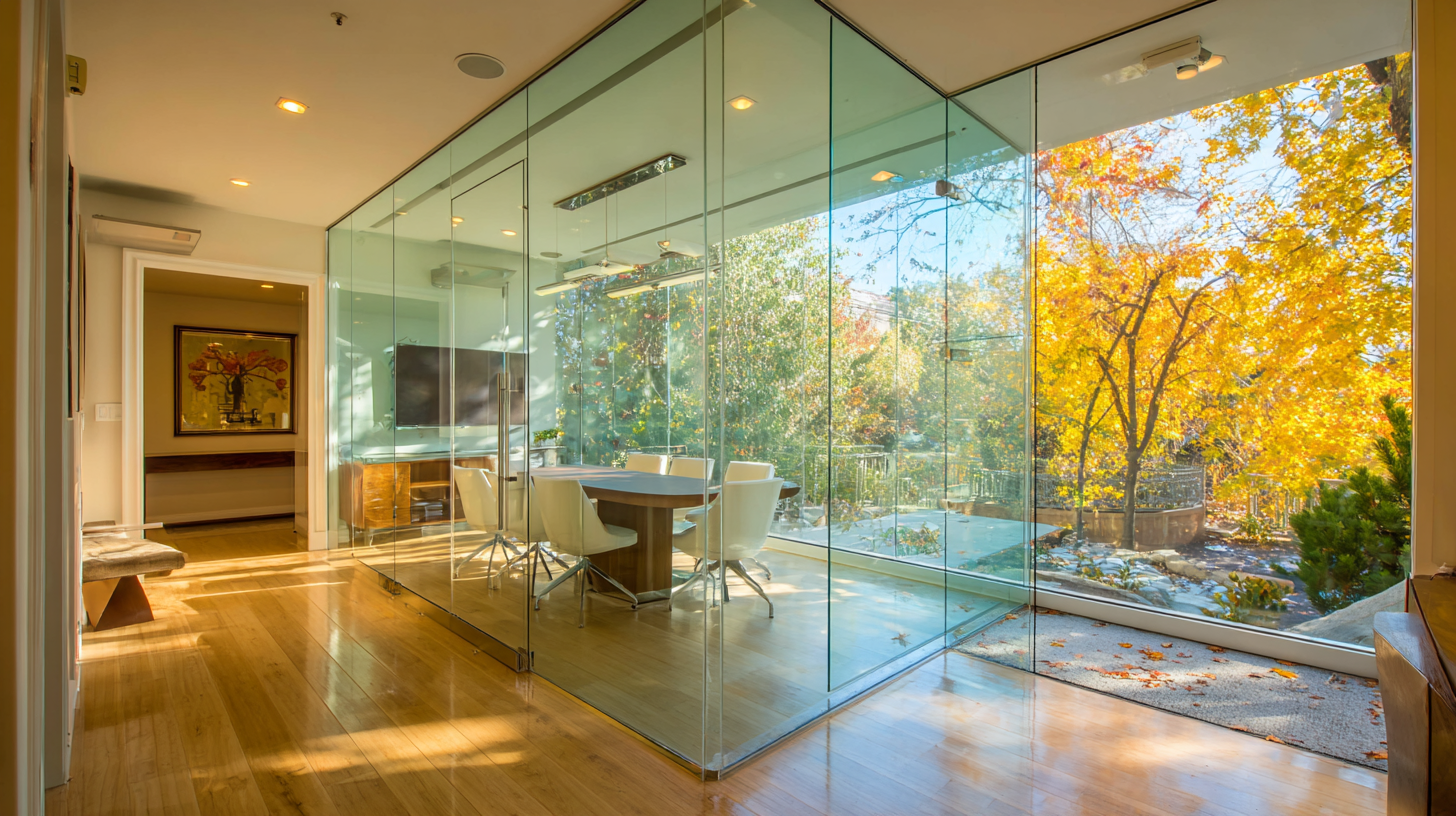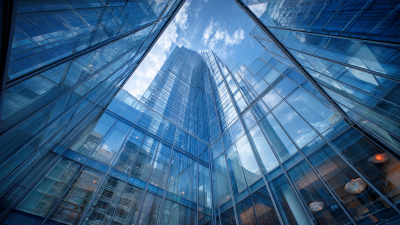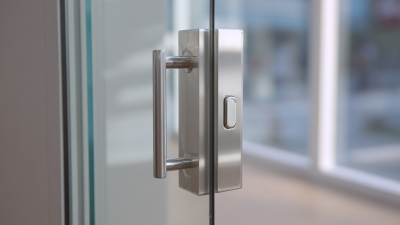How to Choose the Best Glass Wall Systems for Your Modern Space in 2025
As we step into 2025, the architectural landscape is increasingly defined by the integration of innovative materials and design elements, with glass wall systems standing out as a pivotal feature. In recent industry reports, it has been noted that the global market for glass wall systems is projected to reach $9.1 billion by 2026, reflecting a growing demand for customizable and aesthetically pleasing designs that enhance natural light and connectivity within modern spaces. Renowned architect and glass wall systems expert, Dr. Emily Hartman, emphasizes the importance of these systems in today's architecture, stating, "Glass wall systems not only redefine outdoor and indoor spaces but also create a seamless flow that modern occupants crave."

Choosing the right glass wall systems can fundamentally transform a space, balancing functionality and elegance. Key considerations include material quality, thermal efficiency, and design versatility. According to the Building Industry Association, nearly 70% of new constructions are incorporating extensive glass elements to maximize energy efficiency and minimize carbon footprints. With advancements in technology, these systems are now more sustainable and customizable than ever, adapting to various demands and aesthetics to fit both residential and commercial applications. As we navigate the world of glass wall systems, informed decisions can significantly enhance both the practicality and visual appeal of modern environments.
Understanding the Key Benefits of Glass Wall Systems for Modern Interiors
Glass wall systems are increasingly becoming a staple in modern interiors, thanks to their versatile benefits that appeal to both aesthetics and functionality. According to a recent report by the American Institute of Architects, around 63% of architects in the United States have seen a growing demand for glass systems in interior design projects. This trend is largely driven by the emphasis on natural light and open spaces, which glass walls undoubtedly provide. The transparency of glass walls not only enhances the visual connection within a space but also helps reduce energy costs by utilizing daylight.
Moreover, the durability and insulation properties of modern glass wall systems have significantly improved, making them ideal for a variety of environments. A study by the Glass Association reports that advanced glass technology has led to products with U-values as low as 0.2, resulting in better energy efficiency compared to traditional wall materials. These systems not only contribute to a contemporary aesthetic but also align with sustainable building practices, appealing to eco-conscious consumers. By incorporating glass wall systems, homeowners can create a seamless transition between interior and exterior spaces, ultimately transforming their living environment into a modern oasis.
Evaluating Design Aesthetics: Matching Glass Walls with Your Space
When evaluating design aesthetics for glass wall systems in modern spaces, it's essential to consider how these installations harmonize with their surroundings. According to a report by Grand View Research, the global glass wall systems market is projected to reach $35 billion by 2025, fueled by an increasing demand for natural lighting and open-plan designs. This trend underscores the importance of selecting glass walls that not only enhance visual appeal but also maintain a cohesive design language throughout the space.
The interplay between materials and colors plays a critical role in achieving a seamless aesthetic. For instance, using frameless glass systems can create an illusion of expanded space, which is especially valuable in urban environments where square footage is often limited. A survey conducted by the American Society of Interior Designers found that over 60% of designers prioritize transparency and light optimization when selecting materials for commercial and residential projects. Integrating glass walls that complement other design elements, such as flooring and furniture, can elevate the overall ambiance, providing an upscale, modern feel that aligns with contemporary architectural trends.

Assessing Energy Efficiency and Insulation Properties of Glass Wall Options
When selecting glass wall systems for modern spaces in 2025, it is imperative to assess their energy efficiency and insulation properties. Advanced glass technologies offer a variety of options that not only enhance aesthetic appeal but also improve thermal performance. Low-emissivity (Low-E) glass, for instance, is designed to reflect infrared light while allowing natural sunlight to enter. This property significantly reduces heating costs, making it a popular choice for architects aiming for sustainable designs.
Moreover, the effectiveness of insulation in glass walls can greatly impact overall energy consumption. Double or triple glazing is recommended for its superior thermal resistance. These multi-layered systems trap air between panes, minimizing heat transfer and contributing to a more energy-efficient environment. Additionally, consider the frame materials used in conjunction with glass; thermally broken frames can further reduce energy loss, ensuring that your modern space remains comfortable year-round while adhering to green building standards.
How to Choose the Best Glass Wall Systems for Your Modern Space in 2025 - Assessing Energy Efficiency and Insulation Properties of Glass Wall Options
| Glass Type | U-Value (W/m²K) | SHGC (Solar Heat Gain Coefficient) | LR (Light Reflection) | Noise Reduction (dB) | Color Options |
|---|---|---|---|---|---|
| Low-E Glass | 1.1 | 0.25 | 0.70 | 32 | Clear, Green, Blue |
| Triple Glazed Glass | 0.8 | 0.21 | 0.75 | 38 | Clear, Grey, Bronze |
| Tempered Glass | 1.5 | 0.30 | 0.65 | 28 | Clear, Tinted |
| Acoustic Insulating Glass | 1.2 | 0.27 | 0.73 | 45 | Clear, Frosted |
| Smart Glass | 1.0 | 0.20 | 0.80 | 30 | Customizable |
Exploring Cost Considerations: Budgeting for Quality Glass Wall Systems
When selecting glass wall systems for modern spaces in 2025, understanding the cost considerations is crucial. While high-quality glass walls can enhance aesthetics and functionality, their initial investment may deter some businesses. However, the lifetime savings on energy efficiency, especially with the rise of solar technology in buildings, are worth noting. The recent push for solar power integration in government projects exemplifies how investing upfront can lead to considerable savings in operational costs.
Tips: One essential tip when budgeting for glass wall systems is to factor in potential energy savings. Opting for products with energy-efficient ratings can minimize utility bills over time. Additionally, explore financing options or incentives that local governments may offer for energy-efficient installations, such as solar-integrated glass systems.
Another tip is to evaluate the return on investment (ROI) for different types of glass walls. Consider how their durability and thermal properties can contribute to lower maintenance costs. By focusing not only on the initial costs but also on long-term benefits, businesses can make informed decisions that align with their sustainability goals while staying within budget.
Selecting the Right Installation and Maintenance Services for Long-lasting Results
Selecting the right installation and maintenance services for glass wall systems is crucial for achieving long-lasting results in contemporary spaces. According to a recent report by the International Glass Association, poorly installed glass systems can lead to structural issues and aesthetic degradation within just a few years. Therefore, choosing a reputable installation service with a proven track record is imperative. Look for companies that employ certified professionals who are well-versed in current installation techniques and materials suitable for your specific environment.

Maintenance is another vital component that often gets overlooked. The Glass and Glazing Federation suggests that regular inspections and servicing can extend the lifespan of glass installations by up to 30%. This means selecting a maintenance provider that offers comprehensive services, including cleaning, sealing, and minor repairs. It's advisable to opt for a company that uses cutting-edge technology to monitor the condition of glass elements, as it can prevent significant issues before they arise, ultimately saving you time and money in the long run. By keeping installation and maintenance at the forefront of your planning, you ensure a stylish, functional, and durable modern space well into 2025 and beyond.
Related Posts
-

12 Best Glass Wall Systems to Transform Your Space
-

How to Choose the Best Entry Door Hardware for Your Home
-

What is the Significance of Store Front Glass Doors in Modern Retail设计
-

How to Choose All Glass Solutions for Maximum Energy Efficiency in Modern Construction
-

Exploring Innovations in Sliding Glass Door Handles at the 138th Canton Fair 2025
-

Exploring Glass Door Pulls Trends at the 2025 China Import and Export Fair
